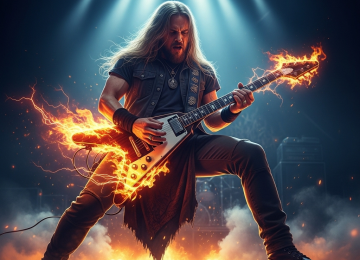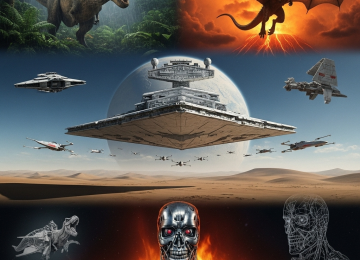Matt Reeves’ Penguin Plans Kept Oswald Cobblepot Out of ‘Birds of Prey,’ Margot Robbie Reveals: “He Said, ‘I’m Going to Use Him in My Thing'”
Robbie Recounts Creative Tussle Over Iconic Batman Villain
Margot Robbie, the Australian actress who brought Harley Quinn to life with undeniable flair in the DC Extended Universe, has unveiled a fascinating tidbit about the production of her 2020 film, *Birds of Prey (and the Fantabulous Emancipation of One Harley Quinn)*. During a recent interview, Robbie disclosed that *The Batman* director Matt Reeves actively prevented the use of Oswald Cobblepot, famously known as the Penguin, as a villain in *Birds of Prey*. The revelation sheds light on the intricate web of creative decision-making within major cinematic universes and the strategic planning that goes into character utilization.

“It’s funny, actually,” Robbie explained, her eyes sparkling with amusement as she recounted the tale. “When we were making *Birds of Prey*, we wanted to have a villain. And there was a lot of back and forth. We actually really wanted to use the Penguin. We thought he would have been a really interesting foil for Harley. He’s so grotesque, and she’s so vibrant, and it felt like a great dynamic.”
However, their plans hit a significant roadblock. Reeves, who was concurrently developing his gritty, noir-influenced take on the Caped Crusader, had already earmarked the iconic Gotham crime boss for his own cinematic universe. “But Matt Reeves had already called dibs, basically,” Robbie continued. “He was like, ‘No, no, no. I’m going to use him in my thing.’ And he was so clear about it. He was like, ‘I’m going to use him in my thing, and I’m going to do something really interesting with him.’ And he absolutely did.”
Robbie’s revelation underscores the complex process of building interconnected cinematic universes, where characters can’t simply be plucked from the ether for every project. Each director, in their pursuit of a unique vision, often lays claim to specific characters, creating a delicate balance of availability and strategic deployment. This kind of creative gatekeeping, while potentially frustrating for a specific film’s creative team, ultimately aims to ensure a cohesive and well-thought-out narrative arc for characters across multiple projects.
Reeves’ Penguin: A Masterclass in Character Reimagining
Matt Reeves’ decision to reserve the Penguin for his upcoming film, *The Batman*, starring Robert Pattinson, proved to be a stroke of genius. Colin Farrell, unrecognizable beneath layers of prosthetics and makeup, delivered a transformative performance as a low-level mobster navigating the grimy underbelly of Gotham City. Farrell’s portrayal eschewed the more overtly cartoonish and flamboyant interpretations of the character from previous iterations, opting instead for a grounded, menacing, and disturbingly human depiction. This grounded approach perfectly complemented Reeves’ vision of a Gotham that is perpetually shrouded in darkness and decay, a city teetering on the brink of complete collapse.

The Penguin in *The Batman* isn’t the flamboyant club owner or the eccentric umbrella-wielding gangster. Instead, he’s a brutal, opportunistic thug with a distinctive facial deformity and a raw, guttural voice. His presence in the film is more insidious, a creature of the shadows and the muck, embodying the systemic corruption that plagues Gotham. This interpretation allowed Reeves to explore the character’s origins and his rise within the criminal hierarchy in a way that felt fresh and compelling.
Robbie’s appreciation for Reeves’ vision is evident. “And look at what he did!” she exclaimed, referring to Farrell’s performance. “Colin Farrell was incredible. It was such a brilliant take on the character. So, I completely understand why he wanted to save him. It was a good call, a very good call.” This mutual respect between filmmakers, even when there’s a potential creative conflict, speaks volumes about the collaborative nature of Hollywood, albeit with clear lines of ownership drawn when necessary.
The ‘Birds of Prey’ Villain Conundrum
Without the Penguin, *Birds of Prey* had to pivot its villainous presence. The film ultimately centered on Roman Sionis, also known as Black Mask, portrayed by Ewan McGregor, and his sadistic lieutenant, Zsasz, played by Chris Messina. While Black Mask is a formidable foe in the Batman canon, his presence in *Birds of Prey* felt somewhat different from the initial concept Robbie and her team had envisioned with the Penguin.

The film’s narrative focused on Harley Quinn’s emancipation from her toxic relationship with the Joker, and the subsequent formation of a new, unlikely team of female anti-heroes. The plot saw Harley embarking on a mission to protect Cassandra Cain, a young pickpocket who steals a valuable diamond belonging to Black Mask. This quest throws her into direct conflict with Sionis and his ruthless organization.
While Black Mask provided a compelling antagonist, the dynamic with the Penguin might have offered a different flavor. The Penguin’s particular brand of corruption, his less overtly theatrical but deeply entrenched criminal enterprise, could have provided a stark contrast to Harley’s chaotic energy. Imagine Harley’s unpredictable antics clashing with Cobblepot’s calculating, albeit grotesque, machinations. It’s a scenario ripe with comedic and dramatic possibilities, one that fans have often speculated about.
However, the success of *Birds of Prey* cannot solely be judged by its villain. The film was lauded for its vibrant visual style, its strong female characters, and its R-rated, unapologetic energy. Robbie’s portrayal of Harley Quinn continued to be a highlight, showcasing the character’s complex blend of humor, tragedy, and fierce independence. The ensemble cast, including Mary Elizabeth Winstead as Huntress, Jurnee Smollett-Bell as Black Canary, and Rosie Perez as Renee Montoya, also received praise for their contributions.
Strategic Character Allocation in Shared Universes
The incident with the Penguin in *Birds of Prey* is a microcosm of the larger challenges and strategies involved in managing shared cinematic universes. When multiple films are set within the same continuity, careful planning is required to avoid character overlap and ensure that each appearance serves a distinct narrative purpose. This often involves a degree of “claiming” characters by directors or studios to avoid dilution and to maintain creative control.

For instance, when the DC Extended Universe was in its nascent stages, there were undoubtedly conversations about which villains would be introduced and when. The Penguin, being such a recognizable and versatile character, would have been a prime candidate for various storylines. However, once Matt Reeves committed to a specific vision for *The Batman*, and identified the Penguin as a key player in his world-building, other projects would naturally have to look elsewhere or risk stepping on established creative toes.
This strategic allocation ensures that characters are not overexposed and that their introductions feel organic and purposeful within their respective narratives. It also allows for different interpretations of the same character across different films, as long as they are within the established rules of each universe. In this case, Reeves’ commitment to his Penguin meant that *Birds of Prey* had to explore other avenues for its antagonist, leading to the compelling, if different, portrayal of Black Mask.
The revelation also speaks to the power of specific directorial visions. Matt Reeves is known for his meticulous approach to filmmaking and his deep understanding of the Batman mythology. His assertion of control over the Penguin character signals a desire to craft a definitive portrayal that aligns with his specific thematic interests for *The Batman*. This level of conviction is often what separates memorable cinematic experiences from the merely adequate.
The ‘What If’ of a Penguin-Fueled ‘Birds of Prey’
While Robbie’s acknowledgement of Reeves’ claim is gracious, it’s impossible not to wonder about the alternate reality where the Penguin *was* the villain in *Birds of Prey*. What kind of dynamic would have unfolded? Would his grotesque nature have provided a more visceral, perhaps even horror-tinged, element to the film?

One could envision a scenario where the Penguin’s umbrella-based weaponry and his penchant for eccentric inventions could have been utilized in creative ways against Harley and her crew. Perhaps his arctic-themed gadgetry could have been adapted for a more grounded, street-level conflict. More intriguingly, his deep-seated criminal empire and his manipulative nature could have presented a more complex antagonist for Harley, forcing her to confront a different kind of darkness than the Joker’s nihilistic rage.
The inherent absurdity of the Penguin, coupled with his ruthlessness, is a potent combination. Imagine Harley, with her penchant for breaking the fourth wall and her over-the-top antics, trying to outsmart or out-maneuver Cobblepot. The dialogue alone would have been a goldmine. The visual contrast between Harley’s vibrant, often chaotic aesthetic and the Penguin’s more muted, albeit still distinct, sartorial choices could have been striking.
Robbie herself seemed to relish the thought, despite her acceptance of the decision. “It’s one of those things, you know?” she mused. “You have these ideas, and sometimes they pan out, and sometimes they don’t. But that’s the nature of filmmaking. And thankfully, Matt got to do his thing, and it was fantastic.”
This sentiment highlights the understanding that creative endeavors are rarely born in a vacuum. Collaboration, compromise, and sometimes, the deferral of certain ideas are crucial for the overall health of a cinematic universe. While the *Birds of Prey* team might have seen a missed opportunity, the end result for both films suggests that the creative decisions, however difficult, ultimately served their respective purposes.
A Network of Creative Decisions
The story of the Penguin and *Birds of Prey* serves as an excellent case study for aspiring filmmakers and fans alike, illustrating the interconnectedness of creative projects within a shared universe. It demonstrates that the “ownership” of characters isn’t just about who gets to put them on screen, but who gets to define them for a particular era and vision.

Matt Reeves’ commitment to his interpretation of the Penguin was clearly paramount to his vision for *The Batman*. By reserving the character, he ensured that his portrayal would be uncompromised and fully realized, free from the potential narrative or thematic complications that might arise from its use in a different context. This foresight is what allows for distinct and memorable cinematic universes to flourish.
Margot Robbie’s candidness about the situation also paints a picture of a collaborative Hollywood environment where ideas are pitched, debated, and sometimes, respectfully set aside. It’s a testament to the professionalism that even when there’s a clash of creative desires, the ultimate goal is to serve the larger cinematic landscape.
As audiences eagerly anticipate the continued exploration of Gotham City under Matt Reeves’ direction, and as we reflect on the colorful chaos of *Birds of Prey*, this behind-the-scenes anecdote offers a valuable glimpse into the intricate dance of creative decision-making that shapes our favorite cinematic worlds. It’s a reminder that even the most seemingly straightforward character choices can be the result of complex negotiations and strategic foresight, all in the pursuit of bringing the best possible stories to the big screen. The Penguin, it seems, was destined for a different destiny, one that has now been powerfully realized by Matt Reeves.















